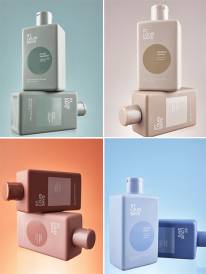Dr Nial Wheate Gold Used as Safe Driver of Cancer Drug
Dr Nial Wheate Gold Used as Safe Driver of Cancer Drug
Gold nanoparticles can be used as delivery vehicles for platinum anticancer drugs, improving targeting and uptake into cells, according to research published in this month's edition of the international journal Inorganic Chemistry.
Researchers at the University of Sydney's Faculty of Pharmacy investigated the appropriateness of different sized gold nanoparticles as components of platinum-based drug delivery systems such as cisplatin.
The researchers studied the cancer drug's controlled synthesis, reproducibility, consistency of drug loading and stability.
According to Dr Nial Wheate, senior lecturer in pharmaceutical chemistry and leader of the project, the effectiveness of the cancer drug cisplatin could be significantly improved by gold nanoparticles, which selectively pick up and drive the platinum-based drug into solid cancer tumours.
Dr Wheate says the team conducted multiple testing regimes on the gold nanoparticles:
'For any new drug to get approval for human clinical trials, it must demonstrate not only efficiency but also the capability of being reproducibly manufactured and stable in storage," he says.
'Developing and making a drug is a lot like building and designing a car. You have to test and retest it for durability and all the safety features.
'Previously, we have shown that platinum drugs can be attached to gold nanoparticles and that cellular uptake and effectiveness levels are greatly improved.
'But we needed to be sure that the benefits of the drug would be consistent. We believed when developing gold nanoparticles as platinum drug-delivery vehicles, it was essential to ensure reproducibility and stability to achieve consistent and safe doses were administered to patients."
Cisplatin, is the leading metallodrug used in the systemic treatment of solid tumours.
'To date, however, its use has been limited by severe toxic side effects, attributed to the indiscriminate accumulation of the drug in both normal and cancerous tissue," says Dr Wheate.
Cisplatin is currently used to treat several types of cancers including testicular, ovarian, bladder, oesophageal, lung, and cervical cancers and melanomas.
Interview with Dr Nial Wheate
Question: Can you explain how gold nanoparicles are being used as a safe driver of a Cancer drug?
Dr Nial Wheate: The way all cancer drugs work is that they attack any part of the body that grows very quickly, cancers grow very quickly but there are other parts of your body that grow very quickly including your hair which is why anti-cancer drugs causes the hair to fall out. Anti-cancer drugs also attacks bone marrow which is why when a patient is taking an anti-cancer drug they become susceptible to infections and become anemic. The lining of the stomach and intestines grows very quickly and when we give the drugs, nausea and vomiting is common. All of the side effects limit how much of the anti-cancer drug a patient can have.
Normally when people relapse after a couple of treatments the cancer may be responding but then all of a sudden the treatment may stop working it's usually because the side effects were so high that a dose high enough to kill the cancer could not be administered.
We don't need better drugs what we need are drugs that have fewer side effects and patients can have more of the drugs which is more likely to kill the cancer.
What we are doing in this project is trying to target the drugs better to the cancer so they don't go anywhere else in the body and cause side effects. Normally when cells grow they don't leave any gaps between them (like a normal brick house with no gaps) but when a tumour grows it is like a badly built house and there are lots of gaps around the windowsills and a draft can get in. We are making little gold spheres that are one billionth of a meter in size but if you put them in solution they scatter the light and you see a deep burgundy, red wine type of look. These particular gold particles get trapped in the gaps of a tumour cancer but they don't get trapped in normal cells and when they are trapped in a cancer cell the cancer sucks them up and the drug gets released and kills the cancer instead of the healthy cells.
Question: Which cancer drug are you referring to?
Dr Nial Wheate: We work with a series of drugs that are based on platinum, literally the platinum metal that is three times as expensive as gold. The drugs that we work with are some of the highest selling and most important cancer drugs in the world and they have an atom of platinum at the centre of them and that platinum is very important because the platinum binds to DNA and kills the cell by binding and breaking down the DNA.
The gold nanoparticles that we are using are good for all the types of platinum drugs that there are.
Question: How long has this research been in process?
Dr Nial Wheate: We have been doing this particular project for about four years now.
Question: When will this research benefit cancer patients?
Dr Nial Wheate: That's the million or billion dollar question! The biggest thing that stops the drug from getting to the market and how long it takes to recruit people for clinical trials (because you have to have volunteers who are happy to do the testing which can take a while) is the safety testing that you need to do before the drug can be tested on humans.
When making a discovery such as this cancer drug, it can take up to fifteen years to get to the market, before it can be used properly.
This can be used to treat cancers including testicular, ovarian, bladder, oesophageal, lung, cervical cancers and melanomas. Ovarian cancer is a big one because ovarian cancer is the cancer that relapses the most. A lot of women who have ovarian cancer are treated with platinum anti-cancer drugs and a lot of women relapse because we are not giving them enough drugs, due to the side effects.
MORE
- Chiropractic Myths & Truths
- Gerard Fogarty Arthritis and Knee Replacement...
- Kym Ellery The ELLERY Eyewear Collection Interview
- Dr Ross Walker The Real Modern Killers Interview
- Shelly Horton Hay Fever Help Interview
- Sebastian VanVeenendaal Royal Rehab's Beach...
- Abigail Koch Family Private Health Insurance...
- Monique Cashion Organic Awareness Month Interview
- Dr Bill Harris Omega-3s Interview
- The Top Ten Health Myths Busted
- Professor Bolin IBD Management a Life-Long...
- Anthia Koullouros Best Cold and Flu Defence...
- Leprosy in NSW
- Julie-Anne Mitchell Go Red for Women Healthy...
- Insight into Chronic Disease Hospitalisations...
- Jeff Chan Mobile Phone Allergies Interview
- How to Conquer Bad Winter Health Habits
- Bad Cholesterol Behind Cancer Spreading In Body
- New Screening Test Recommended To Help Prevent...
- Support For The Rural Nurse Workforce A...
- Kathy Nielsen Ovarian Cancer Australia National...



